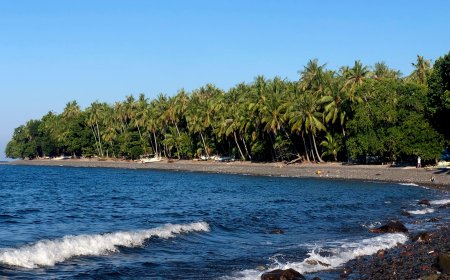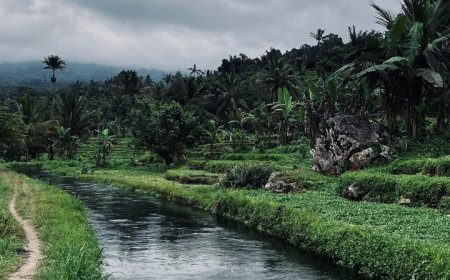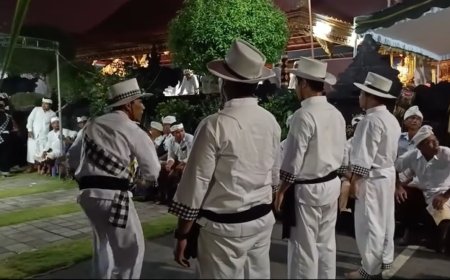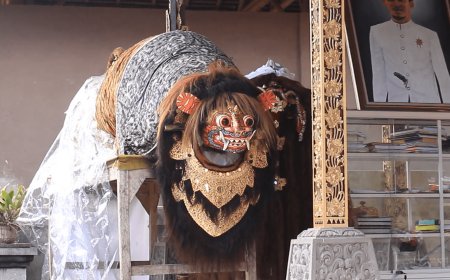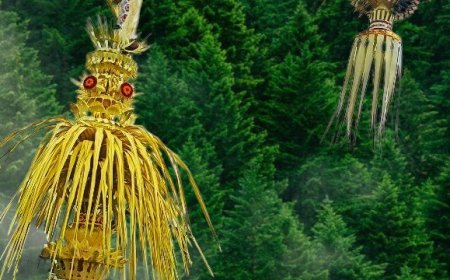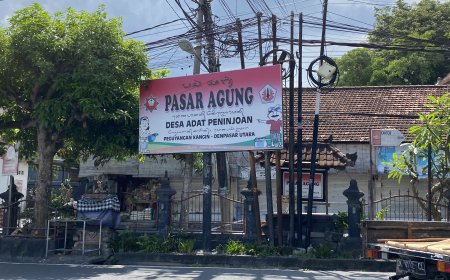Baris Keraras Dance: Symbolism in the Aci Tulak Tunggul Ritual of Mengwi Village
Bali captivates with its natural beauty and cultural diversity. In the context of Hinduism, yadnya ceremonies accompanied by performing arts like Tari Baris Gede reflect devotion to God. Tari Baris Keraras from Mengwi stands out with its vocal performance, solo dancer, and unique use of food as attributes, portraying agrarian life and the connection with nature. The attributes of the dance carry profound symbolism related to farmers' lives and environmental preservation. The Aci Tulak Tunggul ceremony at Pura Taman Ayun serves as a stage for this dance, believed to bring blessings to the embankment, water, and agriculture. The community believes that the performance of this dance safeguards soil fertility and protects fields from pests. The function of this dance extends beyond preserving tradition; it fosters unity and solidarity in the Desa Adat Mengwi community. The symbolic relationship of Tari Baris Keraras with the lake and fields reflects an environmental love perspective, aligning with the Tri Hita Karana concept.
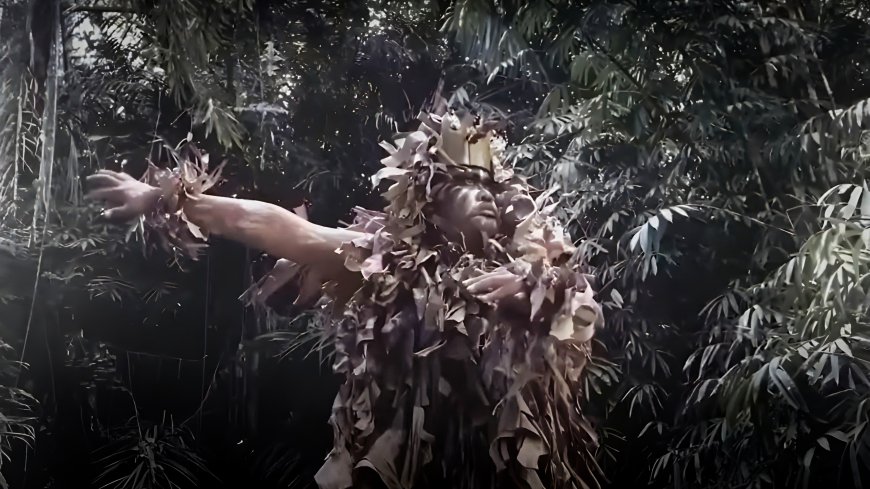
Bali captivates with its unparalleled natural beauty, unrivaled by any other destination in the world. The uniqueness of this island is not only reflected in its stunning natural panoramas but also in the cultural diversity and richness of traditions that vary from one village to another. All of these aspects make Bali a destination that is not only naturally beautiful but also culturally rich and distinctive.
In Hinduism in Bali, yadnya or sacred offerings are an integral part, accompanied by vibrant celebrations, melodious sounds, and dance. The five types of yadnya, namely Dewa Yadnya, Pitra Yadnya, Manusa Yadnya, Rsi Yadnya, and Bhuta Yadnya, see the Balinese community infusing each with artistic touches and creativity as sincere offerings to the Divine. While each yadnya involves different rituals, the core essence remains in the sincerity of the heart. The fundamental step in participating in yadnya ceremonies is to communicate or establish a spiritual connection with Ida Sang Hyang Widhi Wasa and its manifestations. It's essential to remember that expressing devotion is not merely about significant financial contributions but understanding the profound meaning and manifestation of the yadnya.
Beyond ceremonial rituals, offerings to the divine are also presented through performing arts in Bali. One notable form of performing art is the sacred dance known as "tari wali", exclusively presented as a tribute to Ida Sang Hyang Widhi Wasa. This dance goes beyond being a mere performance; it is a profound expression of sincere love and devotion to Ida Sang Hyang Widhi Wasa.
Various types of ceremonial dances play a crucial role in the execution of yadnya ceremonies. One such dance is the Baris Dance, reinforcing the sacredness in every yadnya ceremony. With each ceremony, the Baris Dance symbolizes widyadara and apsara, exemplified in the grand Baris Gede dance. Essentially, the Baris Dance visually represents the agility of a military formation. True to its name, the dance showcases the precision of warrior formations, highlighting their extraordinary skill.
Baris Keraras Dance stands out as a distinctive form of Baris Dance originating from Mengwi District, Badung Regency, Bali. This dance captivates attention with its uniqueness, particularly in its accompaniment that eschews the typical gamelan and relies solely on vocals sung by the dancer during the performance. Notably, the attributes or pepayasan used in this dance are crafted from food materials. Adding to its allure, Baris Keraras Dance is performed by a single dancer, symbolizing a specific lineage.
The attributes in Baris Keraras Dance bear profound meanings, such as the coil made from pork symbolizing flowers and fruits, representing the fertility of agricultural land. The urutan necklace and kana bracelet symbolize snakes, believed to be pest deterrents in rice fields, ensuring undisturbed growth of rice. The Keraras emblem portrays a forest, signifying the close connection between farmers and the forest as a source of water for irrigating fields, contributing to fertility in agricultural lands. The keris made from satay dough symbolizes the purusha element or masculinity, depicting men as the backbone of the family providing prosperity for all family members. Some attributes of Baris Keraras Dance are crafted from food, serving as offerings to the mysterious figures or wong samar on the embankment, bestowing fertility upon the agricultural land in Subak Bukti Batan Badung.
The implied symbolic movements in Keraras Dance serve as an invitation and appeal to the community to preserve the harmony of the universe and distance themselves from negative external influences. The dance's movements captivate with beauty, symbolizing both grace and purity. Baris Keraras Dance showcases choreography adapted to the dancer's precision. Uniquely, the dance's movements differ from conventional Baris Dance. Baris Keraras starts with a malpal movement towards a safe space for the dance, featuring gentle sways to the right and left, creating a contrast with single Baris Dance that emphasizes the heroic and gallant character.
In Mengwi, Baris Keraras Dance is considered a sacred dance exclusively performed during ceremonies and not merely for entertainment. The dance performances usually take place in the innermost area of a temple, known as jeroan or uttama mandala. Baris Keraras Dance is a type of ritual dance presented in the Aci Tulak Tunggul ceremony held at Pura Taman Ayun.

The Lake at Pura Taman Ayun in Mengwi (Photo Source: Author's Collection)
Aci Tulak Tunggul is a ceremony of returning offerings aimed at presenting harvest yields such as rice and fruits. The purpose is to maintain the balance of nature and express gratitude from the community for the safety of the harvest, particularly the Krama Subak Bukti Batan Badung, who receive water from the Taman Ayun pool. The ceremony is held every 210 days, known as Anggara Kasih Medangsia, equivalent to every six months. With the completion of the mapakelem ceremony, the staging of the Baris Keraras Dance concludes.
The community believes that the proper execution of the Aci Tulak Tunggul Ceremony and the performance of the Baris Keraras Dance will bring various benefits. The embankment is expected to become sturdy, water will flow smoothly, and the fields receiving water from the lake will become fertile and protected from pest attacks. Conversely, if the ceremony and dance are not conducted, the local community believes that the risk of people drowning in the Taman Ayun Lake will increase. Fields depending on the water flow from the lake may also face crop failure or pest infestations.
Tari Baris Keraras serves several functions, including its religious significance, which is diligently preserved by the traditional village community of Mengwi. The community believes in the spiritual power and vibrations conveyed through the performance of Tari Baris Keraras. Additionally, the dance fulfills a social function by fostering a sense of togetherness and high solidarity among the people of the traditional village of Mengwi. Furthermore, Tari Baris Keraras plays a role in religious education, contributing significantly to instilling faith and devotion to the Almighty God in its existence.
In addition to the exotic sacred dance, the ecological phenomenon and natural support system in Mengwi are of paramount importance. Pura Taman Ayun represents the Tri Hita Karana concept, serving not only as a primary place of worship but also as a source of irrigation water for the people of Mengwi through its pond. On a broader scale, Pura Taman Ayun, along with its lake, contributes to Danu Kertih, fostering the sustainability of a significant water source. The elders emphasize that Tari Baris Keraras holds a profound connection with the lake and rice fields. Symbolically, the dance serves as a representation of environmental love, a value crucial in the education of today's younger generation.




















